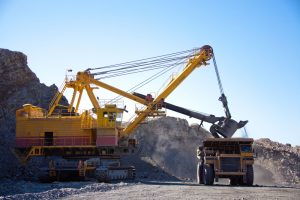Top Gold Miners Production Declined 15% While Costs Escalate
The comments below are an edited and abridged synopsis of an article by SRSrocco Report
The gold price increased in 2018, but the top gold miners’ production declined while costs escalated. Output at three of the world’s top gold miners fell in the first half of 2018 compared to the same period last year. With rising costs due to higher energy prices, on top of decreasing production, the top gold miners’ free cash flow declined precipitously in 2018.
 This report focuses on free cash flow, or subtracting capital expenditures from the company’s cash from operations. Because the gold mining industry is capital intensive, a company’s free cash flow is a better indicator of financial health than net income.
This report focuses on free cash flow, or subtracting capital expenditures from the company’s cash from operations. Because the gold mining industry is capital intensive, a company’s free cash flow is a better indicator of financial health than net income.
Of the total $718 million in positive free cash flow, Newmont accounted for $530 million and Barrick $204 million, while Goldcorp posted a negative $16 million. However, free cash flow in all three decreased significantly in 1H 2018 to only $38 million. Newmont’s free cash flow fell to $173 million, Barrick’s fell to $9 million, and Goldcorp’s fell even further to a negative $144 million.
Newmont, Barrick andAngloGold only posted a net $7.5 billion in positive free cash flow from 1998 to 2017. If we divide the 391 million ounces of total gold production, the net free cash flow per ounce was $19. Now compare that to the $832 average gold price during the 20-year period.
By focusing on the free cash flow, over an extended period, we can see that the top gold mining companies haven’t made much money. Share dilution or the increase in debt is not included.
While the data suggests that the cost of production is higher than the market reports or that the combined free cash flow has been quite small, gold miners will be one of the few assets to own when the markets crash over the next several years.
